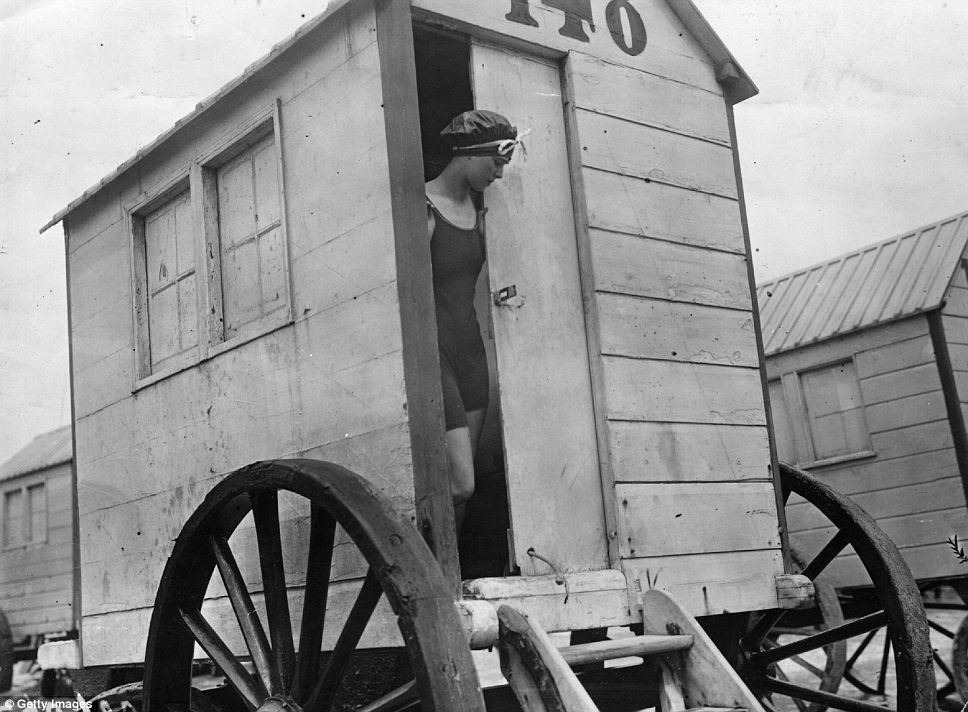There are certain sea-side etiquettes that needed to be observed and decorum to be maintained.
To help women maintain their modesty and dignity, a simple contraption called the bathing machine was developed.
The carriage would be then drawn back to the shore.
But this is not true.
There is evidence of the existence of the bathing machine at least fifteen years prior.
Benjamin Beale, however, did contribute to the design of the bathing machine.
As moral values changed, nude swimming and even mixed bathing became indecent.
Legal segregation of bathing areas finally ended in Britain in 1901, and bathing machines declined rapidly.
By the start of the 1920s bathing machines became extinct.
“Mermaids at Brighton” by William Heath (1795 - 1840), c. 1829.
Depicts women sea-bathing with bathing machines at Brighton.
Photo credit: Getty Images
Ostend beach in Belgium in around 1900.
Photo credit: Getty Images
A young woman emerges from her bathing machine in 1911.
Photo credit:wondersinthedark.wordpress.com
Sources:Wikipedia/www.victoriana.com/janeaustensworld.wordpress.com

















